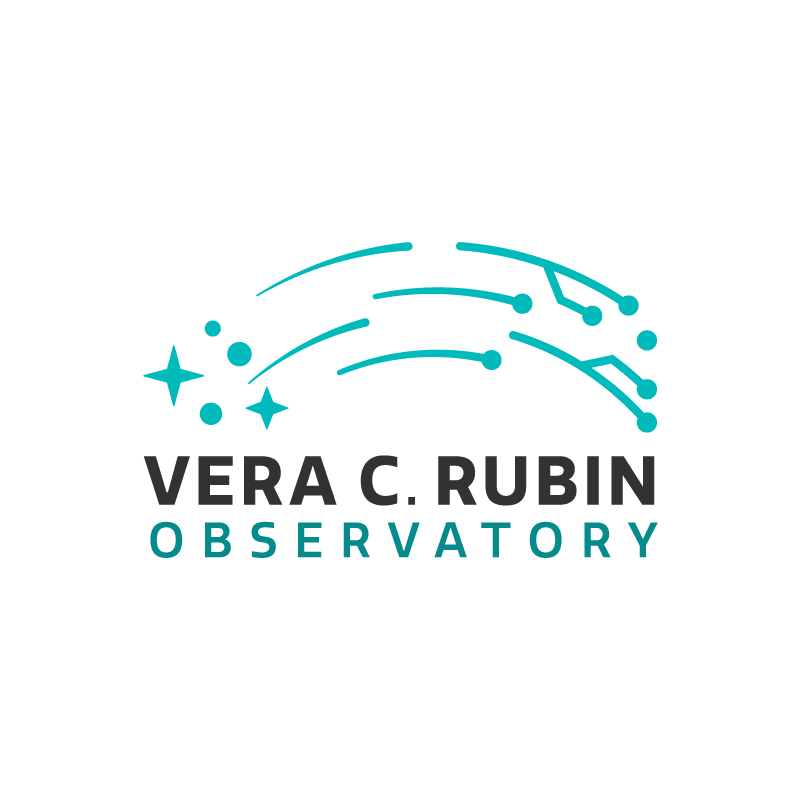Rubin Education News: Careers that Reach for the Stars
2 May 2025
The Merriam-Webster Dictionary defines an observatory as “a building or place designed or equipped for observing natural phenomena (as in astronomy) and an institution whose primary purpose is making such observations.”
As the construction of NSF–DOE Vera C. Rubin Observatory nears completion, there are many reasons to celebrate:
- The successful conclusion of a decade-long construction project, featuring a telescope with a unique optical design and the largest camera ever built for astronomy;
- The beginning of a ten-year survey of the southern sky (the Legacy Survey of Space and Time) that will ultimately generate a staggering 500 petabytes of data;
- The implementation of a sophisticated, global high-speed network to transfer, process, store, and distribute these data.
These accomplishments are impressive in their own right, but none would have been possible without the people who collaborated for years to bring this vision to life. In fact, one might argue that the alternate definition of observatory — as an institution — is the truly primary one.
"Coming together is a beginning. Keeping together is progress. Working together is success."— Henry Ford
Since its inception, Rubin Observatory has been powered by the collective efforts of a global community. Thousands of people from more than 30 countries have contributed resources, including time on other telescopes, computing infrastructure, and software development. The Rubin LSST Science Collaborations include thousands of scientists worldwide, each focused on a particular area of science that the observatory was designed to explore. In the coming decade, thousands more astronomers, engineers, and computer scientists will contribute to Rubin’s operations, driving discoveries and advancing knowledge across many scientific domains.
Beyond the more visible career paths, a wide range of other professions are essential to the observatory’s success. These include instrument technicians, telescope control staff, education and outreach specialists, science writers, graphic designers, procurement experts, and safety officers.
So, how can we, as educators, raise awareness of the incredible variety of STEM careers?
Many students lack exposure to career options and guidance about what’s available. Some believe that only those with advanced degrees can pursue STEM careers. Others may never consider STEM simply because they don’t know anyone in their family or community who works in these fields.
To expand awareness and help students envision themselves as STEM professionals, the Rubin Education and Public Outreach Team has created a series of personal profiles called Rubin Voices. These profiles, available in Spanish as well as English, include short vignettes, photos, and audio clips highlighting individuals working with Rubin. Each person is also featured on a ‘trading card’ for quick reference. The importance of role models can’t be overstated — students need to see people in STEM careers who look and sound like them, or who share similar interests and hobbies.
Consider using the Make Your Own Rubin Voices Trading Card activity to spark student curiosity about STEM careers. After exploring the Rubin Voices profiles, students create their own trading card, envisioning themselves in a STEM role. Blank templates can be completed electronically or printed out for classroom use. A teacher guide comes with suggestions for use. This activity works well as an introduction to STEM careers, an icebreaker, or a featured display during a back-to-school night or a school science festival.
Scott Hildreth (Chabot College) and Kalée Tock (Stanford Online High School) are two educators involved in the Rubin Observatory Educators Community of Practice. They’ve shared a teacher-created lesson plan titled Who Works with Rubin?, which has been successfully tested in both college and high school classrooms.
As Rubin Observatory embarks on its epic quest for what we have yet to discover, it will rely on the next generation being prepared and inspired to pursue the diverse and yet-to-be-invented careers that will push the limits of science and technology. Educators play a vital role in this mission. By helping to level up students’ sense of self-efficacy and widening their perspective of what they can achieve, we can collectively reach for the stars.
NSF–DOE Vera C. Rubin Observatory is jointly funded by the U.S. National Science Foundation (NSF) and the U.S. Department of Energy’s Office of Science (DOE/SC). Rubin Observatory is a joint Program of NSF NOIRLab and DOE’s SLAC National Accelerator Laboratory. NSF NOIRLab is managed by the Association of Universities for Research in Astronomy (AURA) and SLAC is operated by Stanford University for the DOE.
Contacts
Ardis Herrold
Senior Education Specialist
Rubin Observatory
Email: ardis.herrold@noirlab.edu




